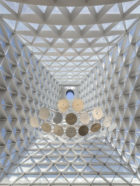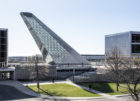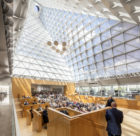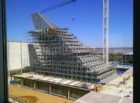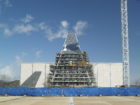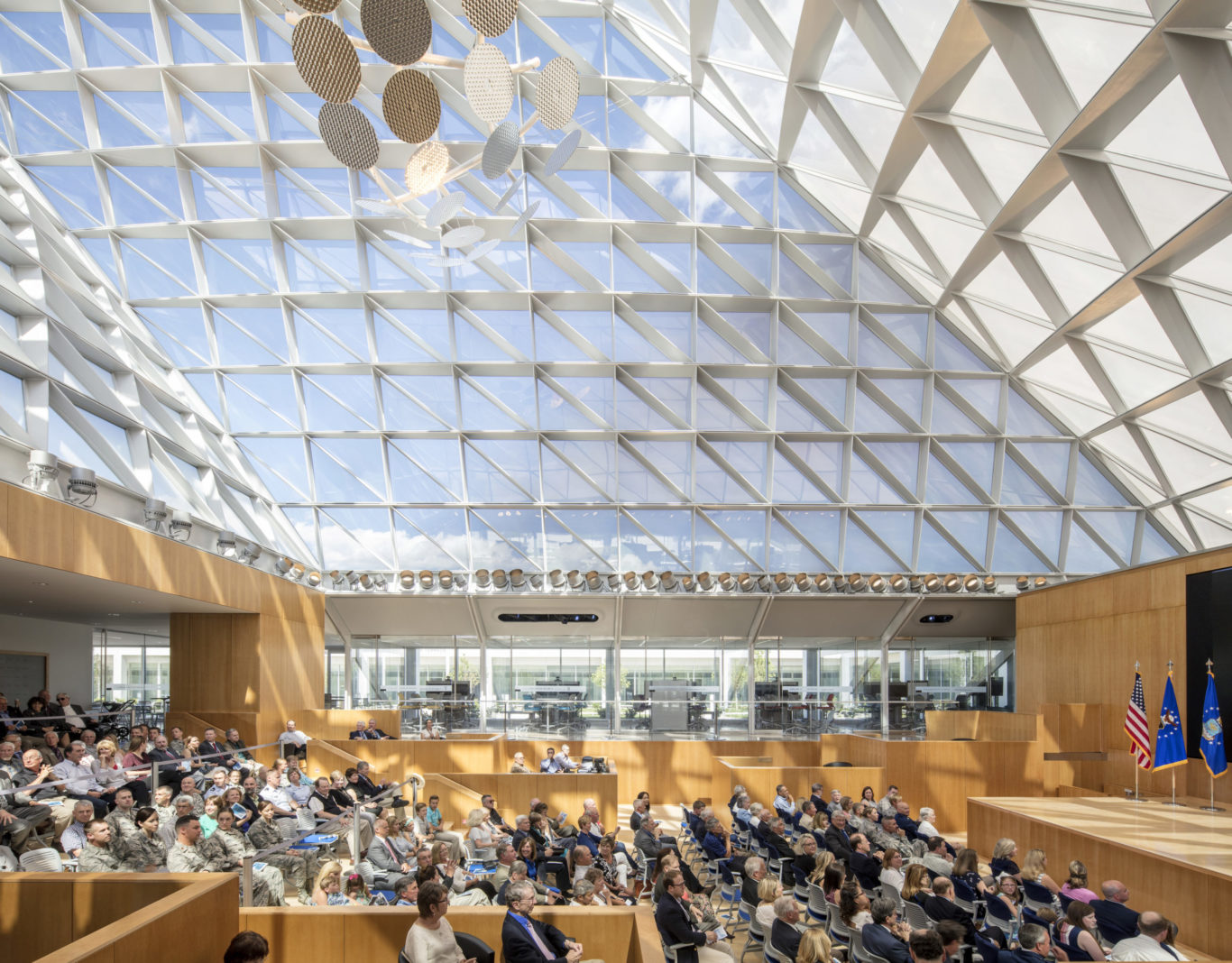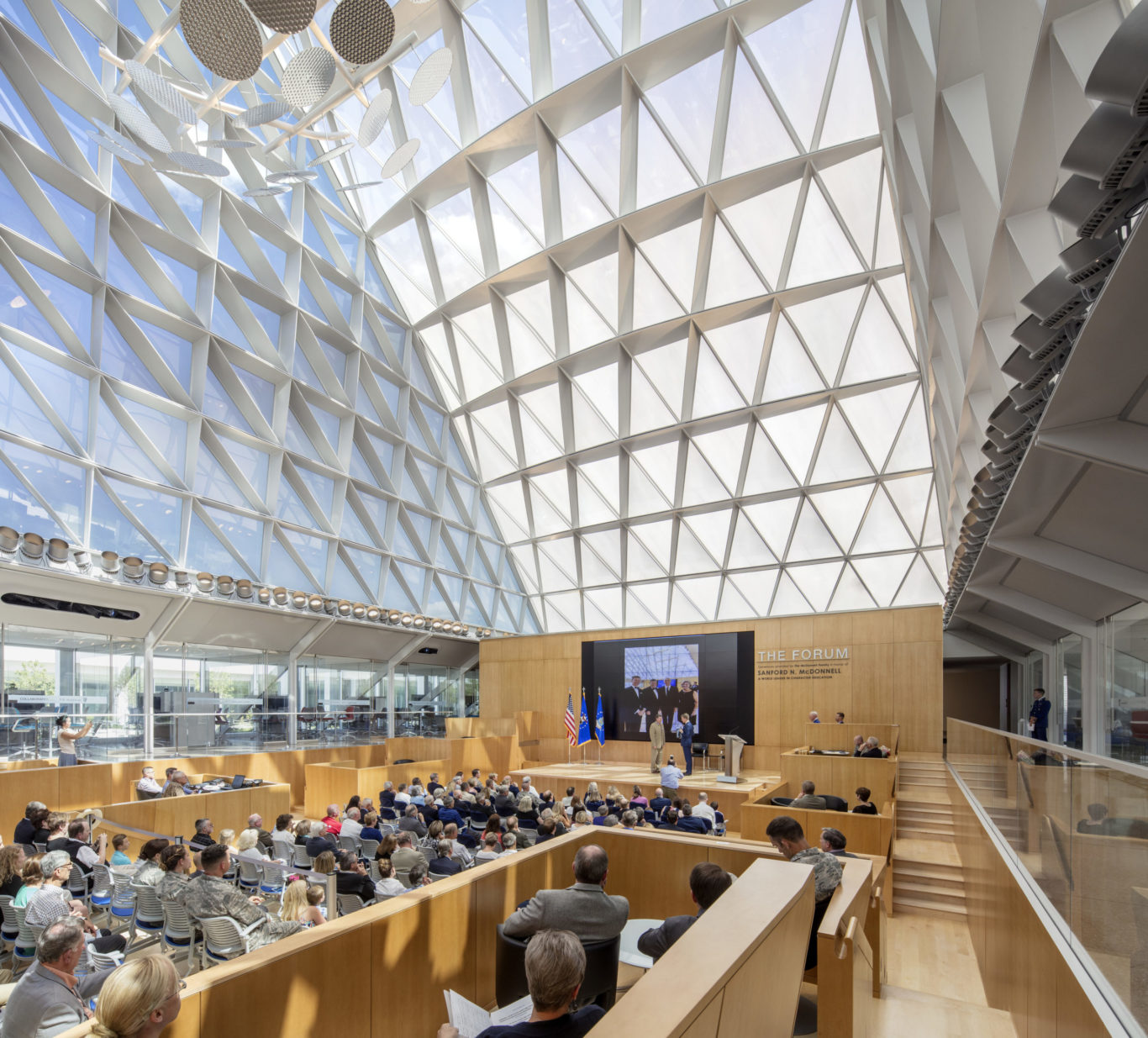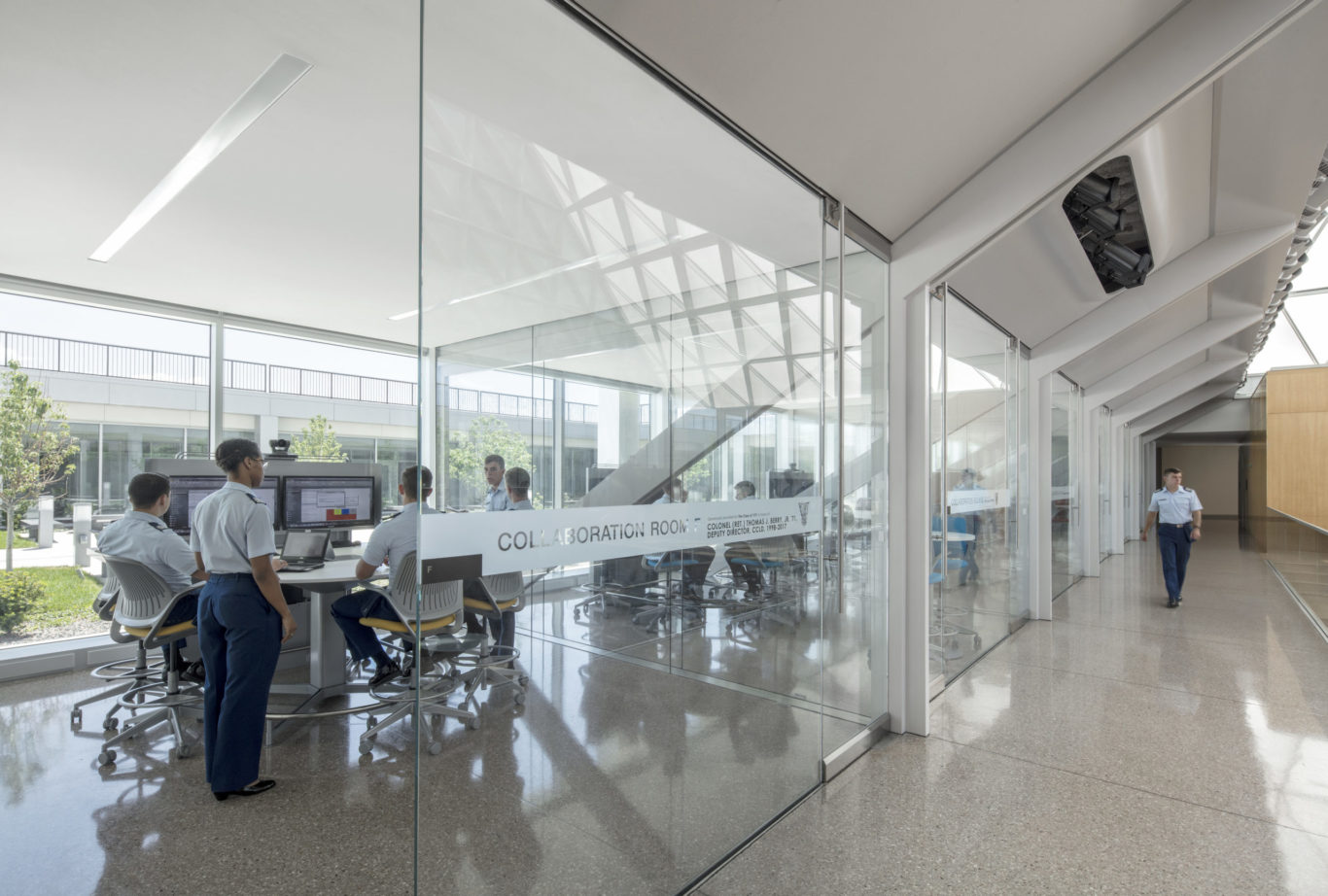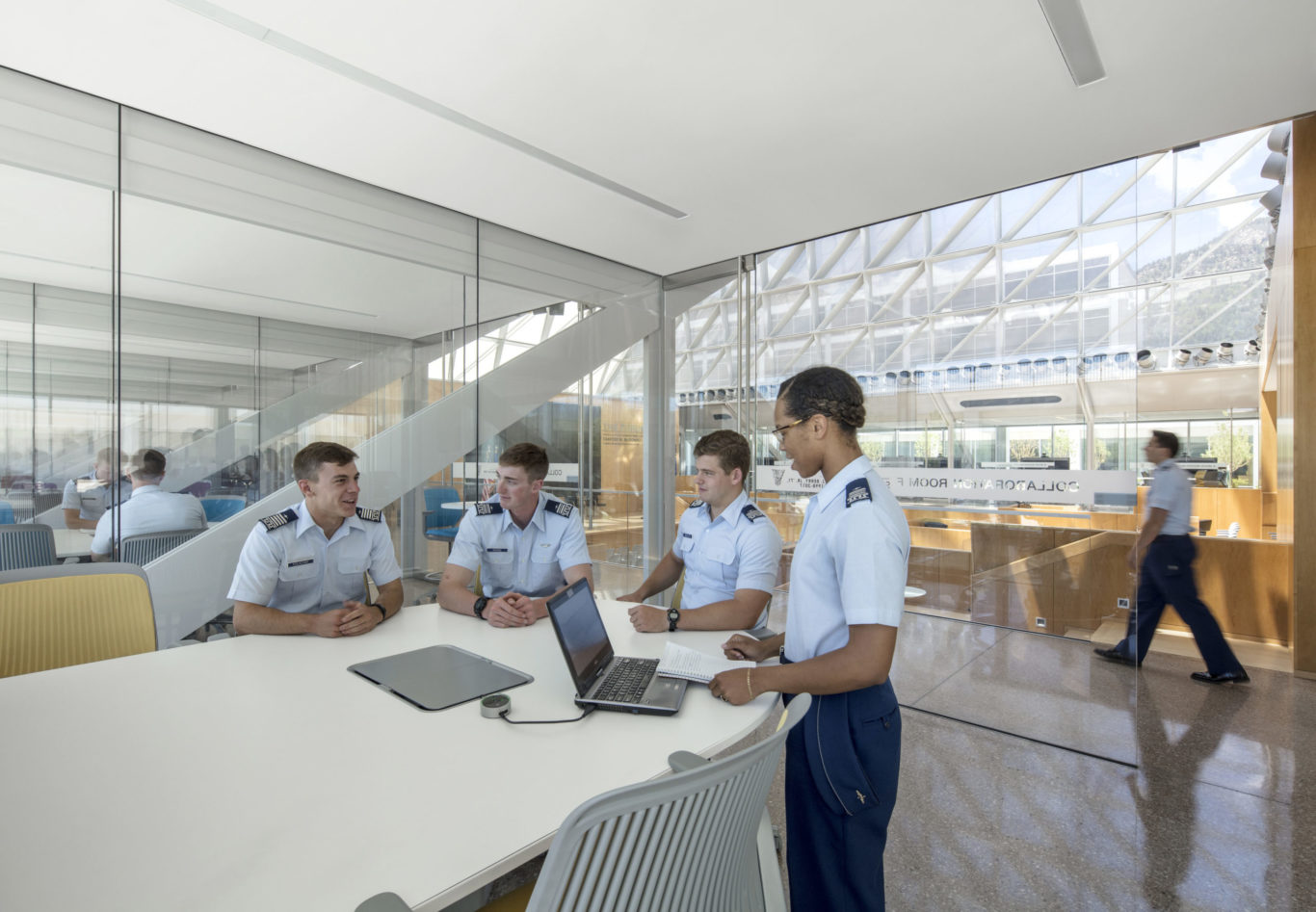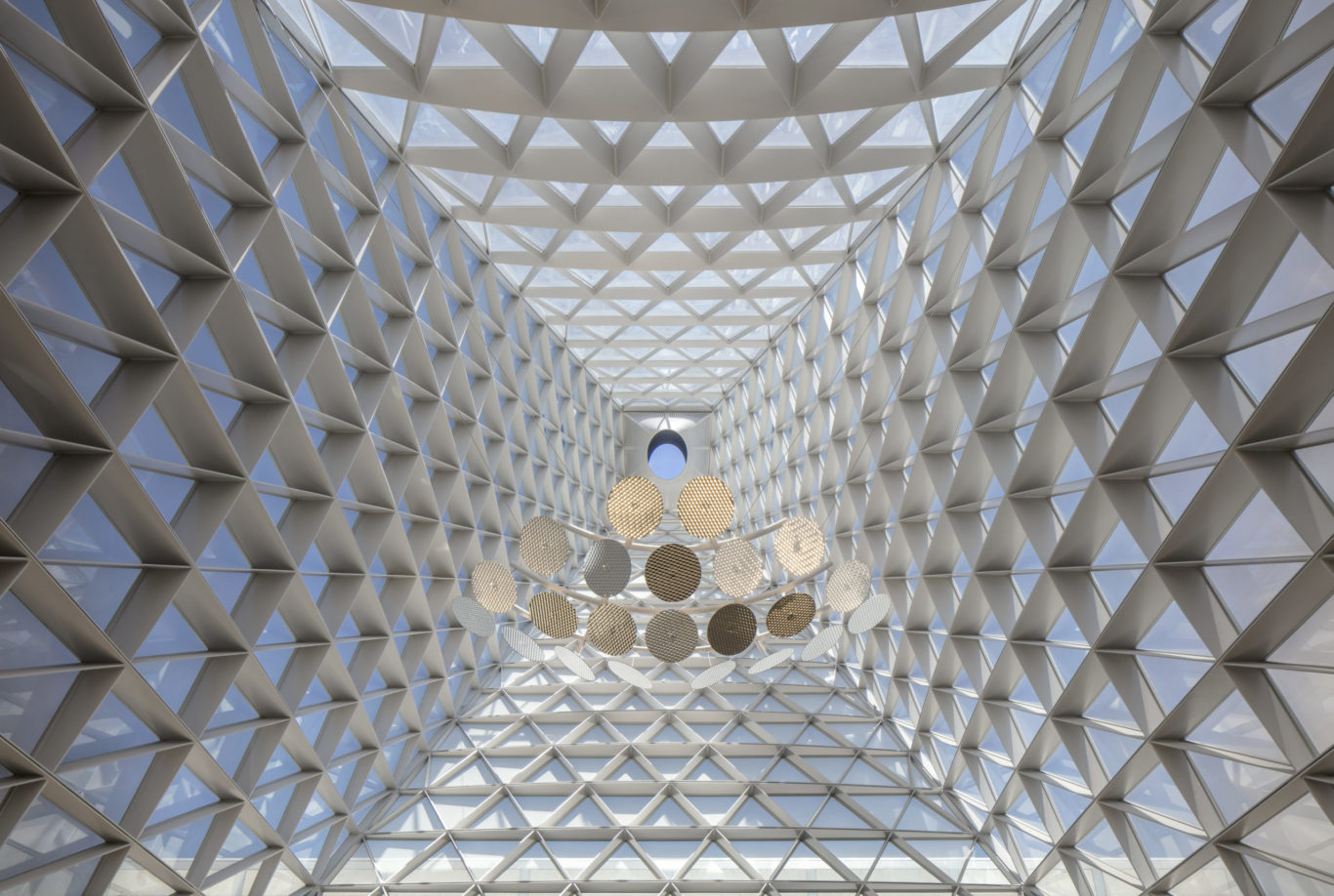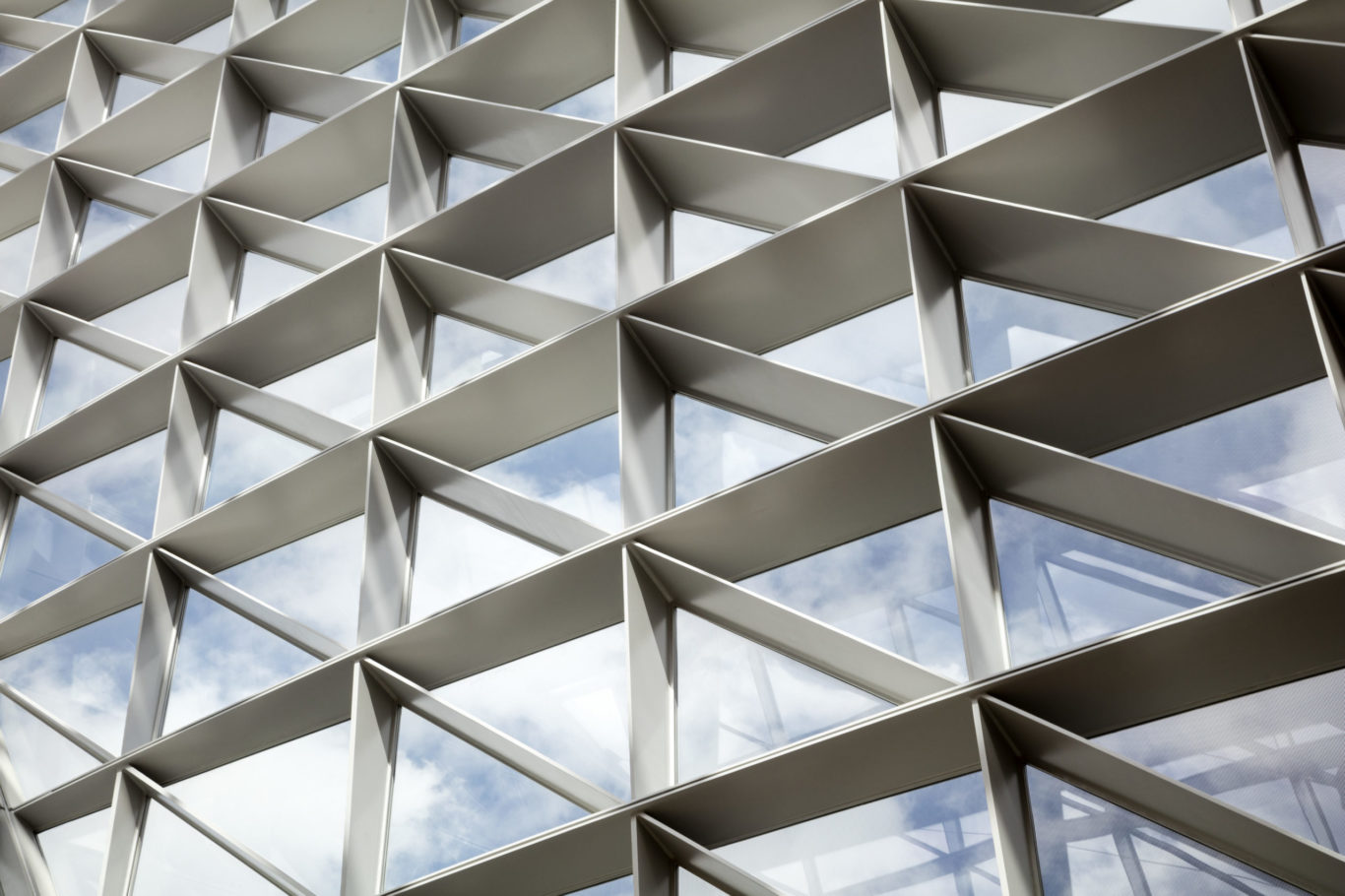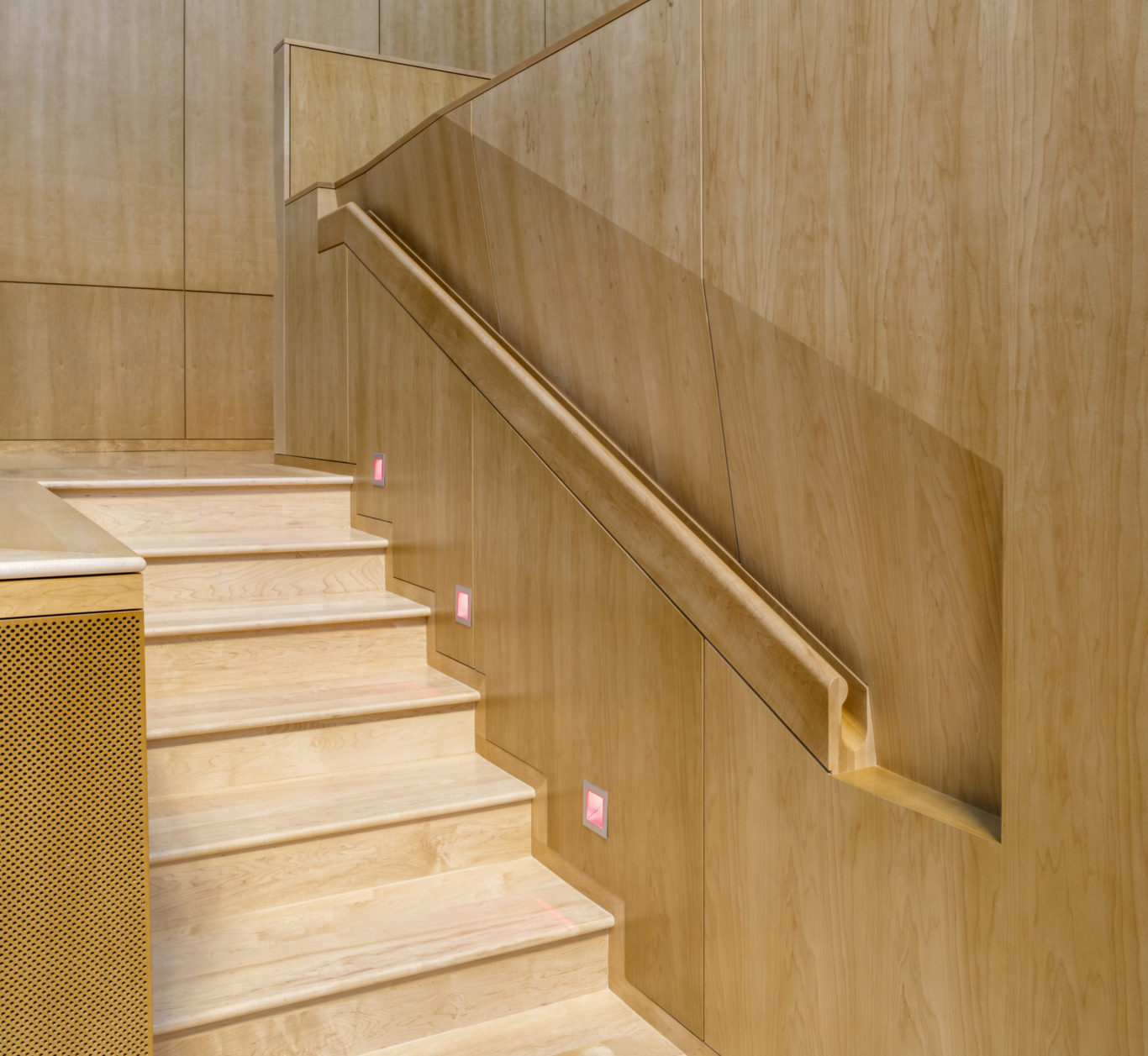A contemporary addition to a landmark campus
In the 1950s, SOM famously master-planned a rigorously modern campus for the U.S. Air Force Academy on a site abutting the Rocky Mountains. Five decades later, SOM revisited the campus—now a National Historic Landmark District—to design a home for the newly created Center for Character & Leadership Development (CCLD).

As an education and research center, the CCLD supports the U.S. Air Force Academy’s mission to integrate character and leadership development into all aspects of the Cadet experience. And with a bold design by an integrated architectural and structural engineering team, the CCLD introduces a contemporary counterpoint to the Academy’s iconic Cadet Chapel.


